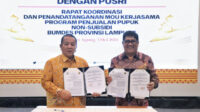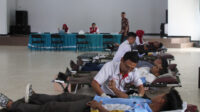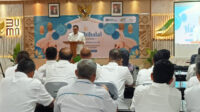 Jakarta, Warta9.com – It seems that in 2024 apart from the political year, next year it is estimated that 6 million more people will fall into poverty. This is because the government predicts that extreme poverty will increase drastically at the end of the year of President Joko Widodo’s reign, namely 2024.
Jakarta, Warta9.com – It seems that in 2024 apart from the political year, next year it is estimated that 6 million more people will fall into poverty. This is because the government predicts that extreme poverty will increase drastically at the end of the year of President Joko Widodo’s reign, namely 2024.
This happens, because the basis for calculating the poor population used globally is different from that used by the government so far.
This was conveyed by the Minister of National Development Planning (PPN)/Head of Bappenas Suharso Monoarfa. According to him, so far the government has used the basis of calculating the extreme poor with a poverty line of US$ 1.9 purchasing power parity (PPP) per day. Even though globally it is already US$ 2.15 PPP per day.
“One homework (the homework we are currently facing) is regarding the method of calculating extreme poverty and now the government is still using the figure of US$ 1.9 PPP,” said Suharso during a working meeting with the DPR’s Commission XI at the DPR Building, Jakarta, as reported by CNBCIndonesia, Wednesday (28/06/2023).
According to Harso, based on this calculation alone, the government must alleviate 5.8 million poor people so that it reaches zero percent by 2024. This is equivalent to 2.9 million people per year.
Harso further explained, if the global basis for calculating people who can be called extreme poor is US$ 2.15 PPP per day, then the government must eradicate 6.7 million poor people by 2024, or 3.35 million people. annually.
“If we use the SDGs (Sustainable Development Goals) figures at US$ 2.15 PPP and if we use this then extreme poverty will increase to 6.7 million so that every year starting this year we have to reduce poverty by 3.35 million,” he explained.
Even so, Suharso ensured, the government would continue to be consistent in eradicating extreme poverty until 2024, by improving the provision of social assistance in a more targeted manner to reduce expenditure burdens, social and economic empowerment by providing guaranteed income increases, and expanding access to basic services.
“Indeed, an extraordinary multi-dimensional way of reducing it has been approached and some have been successful and most of them still have problems with the beneficiaries, which we should have developed through Research Research,” he concluded. (**)



































